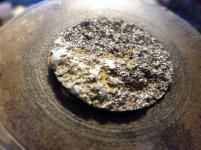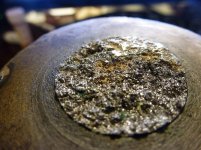Tollster
Veteran Member
Looking at the coarse grain structure, it appears to be a casting, many times if there is any impurities, slag, or laminations in the material it will reduce the tensile strength considerably, I can see a change in the material in the first image between 9 and 11 o団lock, this could be from use after the failure or where the indication propagated from, additionally, and I cannot tell from the photo's, if there are any hair line cracks or perhaps when they turned the threads, they could have left a ridge or some sort of stress riser, in this case it would more than likely be concaved indication, leading to the shearing indication seen hear. It is very common on bolting.


